The Art of Spectacles & Eyewear in Muslim Culture
- BAYT AL FANN
- Aug 10, 2022
- 3 min read
Spectacles are one of the important inventions in the history of humanity. Since the 9th century, Muslim scientists have contributed to the development of optics, as well as designers to fashioning modern eyewear.
The art of spectacles & eyewear in Muslim culture…
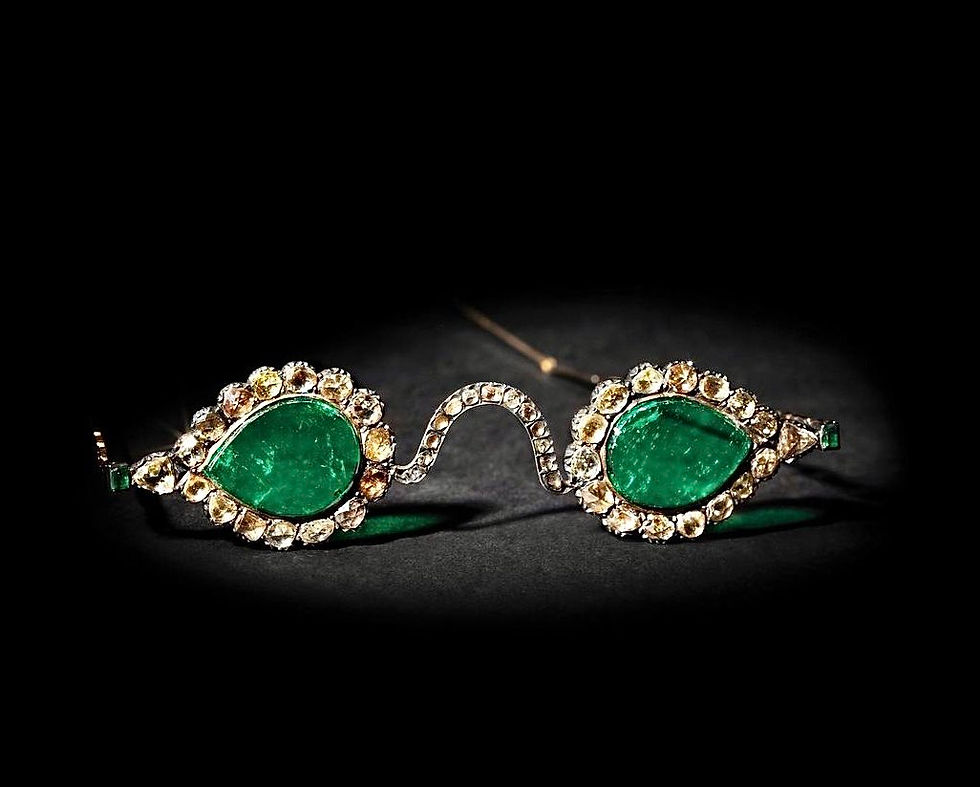
The invention of medical glasses is attributed to the Muslim scholar Al-Hasan Ibn Al-Haytham, but before that the "reading stone" was used in the ninth century, which is a piece of glass divided in half that enlarges the written text when placed on it.
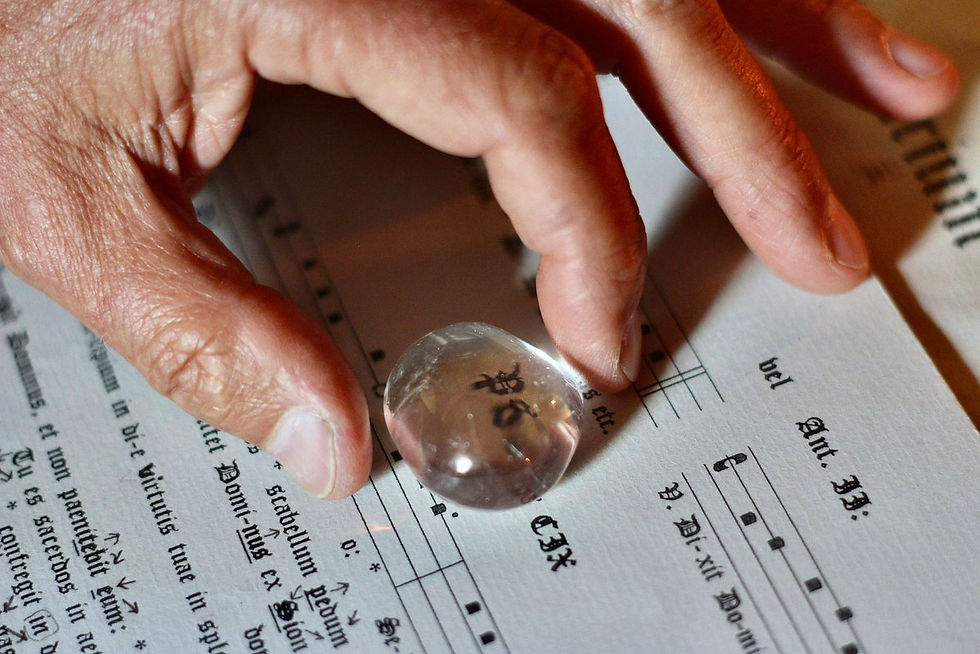
The “reading stone” was invented during the 9th century; it is a piece of glass cut in half, when placed on a text, it magnifies it. It is believed that Abbas ibn Firnas invented the reading stone as an early attempt to improve vision and magnify objects.
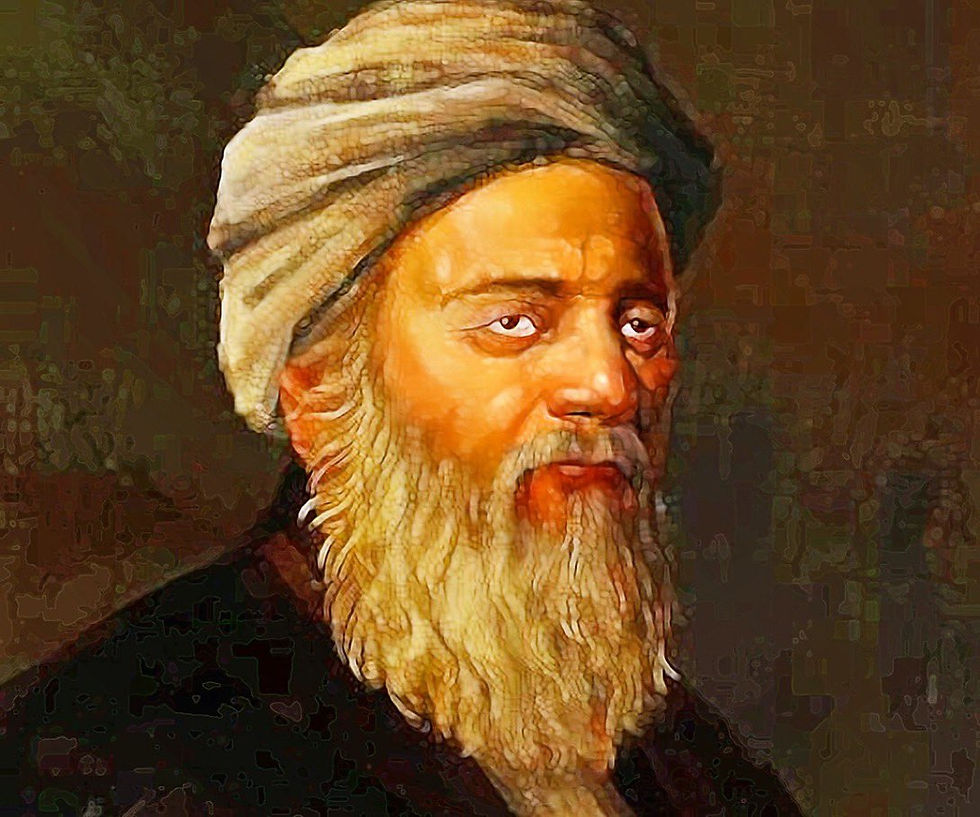
Al-Hasan Ibn Al-Haytham was a pioneer in optics, and conducted many experiments on glass, inventing glasses that helped him to read after his eyesight weakened. He came to the invention of a convex lens that showed words and shapes in a larger and clearer size.

Ibn Al-Haytham studied the structure of the eye and wrote a comprehensive work about his findings, titled Kitab Al-Manazir, or The Book of Optics. It contained a diagram of the eye & its connection to the central nervous system, an observation never been previously made.

Ibn Al-Haytham named the parts of the eye & their English translations are still used today: retina, cornea, vitreous humor & aqueous humor. Also, due to his understanding of the eye & its processes, he studied light & proposed his own theories about colors & light refraction.

After the Latin translations of Ibn al-Haytham became available in Europe in the twelfth century, optics developed there. In his treatise written between 1220 and 1235, Robert Grosseteste mentioned the use of optics to read the smallest letters at further distances.

In the 13th century, the English scholar Roger Bacon (1214-1294) wrote about how to magnify visual objects using pieces of glass spheres. Some science historians suggest Bacon extracted his knowledge from the Latin version of Ibn Al-Haytham’s book Kitab al-manazir (Optics).

In 1635, Ridhā al-'Abbasī, a Persian artist, inspired his student Mu'in al-Musawwer to paint him while he was wearing his specs. The painting is an early artwork in the Muslim world that features a pair of eyeglasses. It is in Princeton University Library in New Jersey.

One of the earliest depictions of eyeglasses in India. Miniature of artist Mir Sayyid Ali, Portrait of his father Mir Musavvir, Musee Guimet, Paris, 1565-70. In this miniature, the spectacles comprised lenses mounted on a wooden frame, with arms curling over the ears.
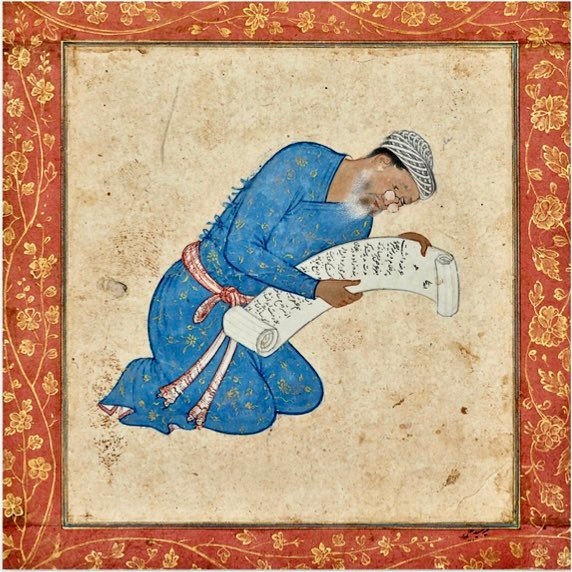
Another early depiction of eyeglasses in India is found in this Mughal painting from 1585. A close-up of artist at work wearing eyeglasses - Berlin Jahanghir Album.

Portrait of Behzad the painter wearing glasses, 17th century "According to Simsar, this Behzad was a contemporary of Emperor Jahangir (r.1605-27), not to be confused with the Persian master Behzad" From Freer Gallery.
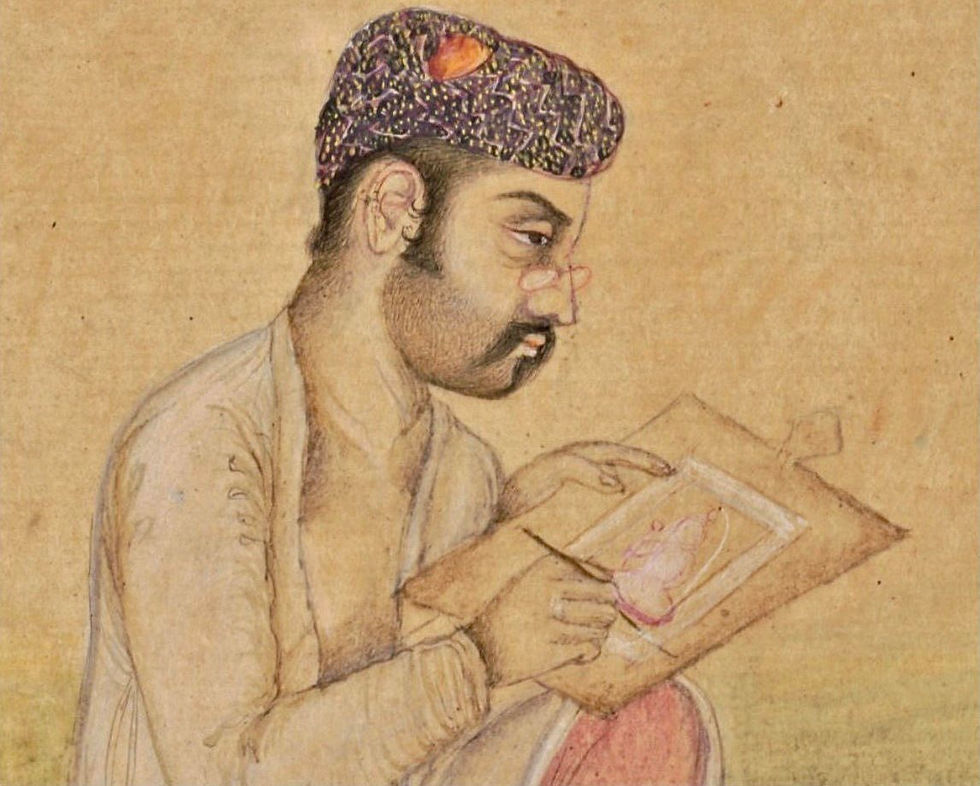
Although these paintings almost certainly depict glass lenses, they offer a context for our understanding of the use of spectacles at the Mughal court. Aurangzeb carried on a Palanquin, a pair of pince-nez spectacles next to his pen case & ink pot, 18th c. British Museum.

While ordinary lenses merely function to improve sight, the Mughals also invented eyewear as aids for spiritual enlightenment—with diamonds thought to illuminate and emeralds believed to have held miraculous powers to heal and to ward off evil.

Legend has it that following the death of Shah Jahan’s wife Mumtaz Mahal, in whose honor the Taj Mahal was built, the emperor is said to have cried so many tears that he needed to cure his ailing eyes with emerald stones.
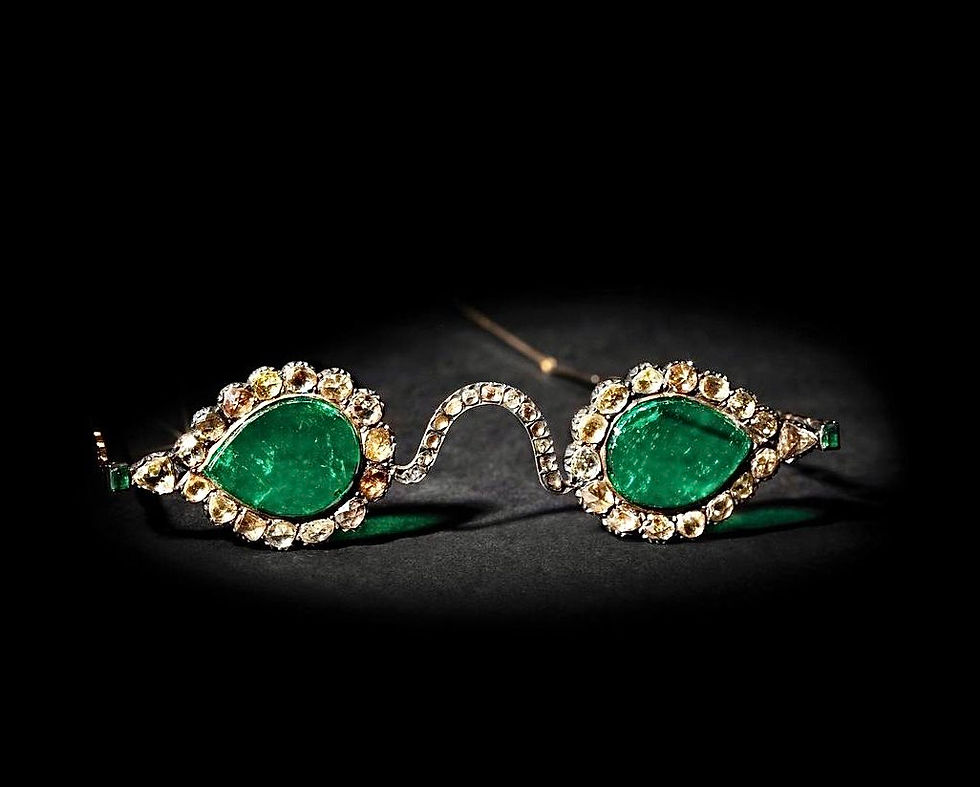
This 17th century Mughal pair of unique, bejewelled eyeglasses were up for auction at Sothebys in October 2021. With the diamond pair named the ‘Halo of Light’, and the emerald named the ‘Gate of Paradise’, the spectacles uphold the cultural confluence of science and beauty.
The frames into which these special lenses were placed are attributable to the 1890s and are decorated with rose-cut diamonds set in the pachchikam technique which resembles kundan in that it involves encasing the stones directly into gold or silver, but incorporates a European ‘open claw’ design, an aesthetic which was popularised in the eighteenth/nineteenth century.

The Mughal bejeweled spectacles were commissioned by an unknown prince and fashioned by an artist, who shaped a 200-carat diamond and a brilliant Colombian emerald, weighing at least three hundred carats, into two frames.
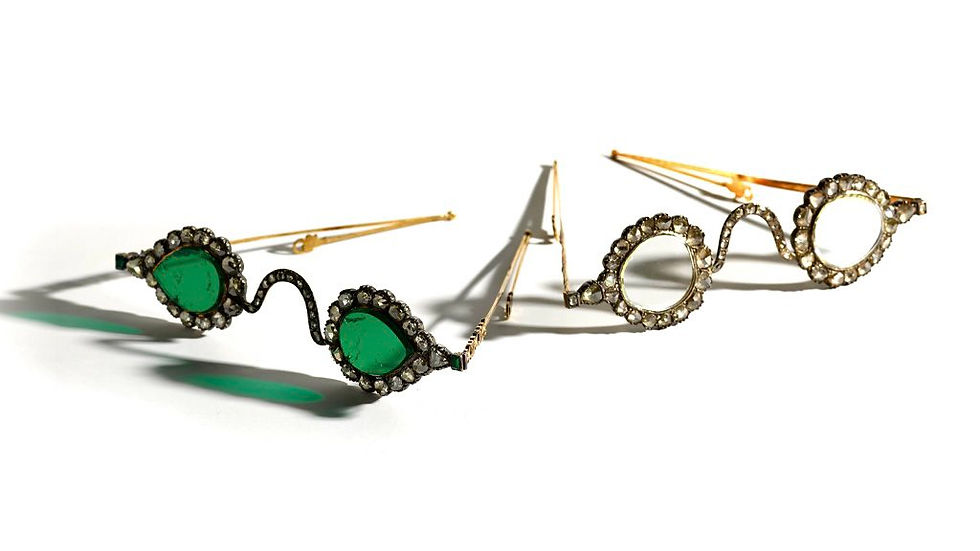
In January, Pharrell Williams partnered up with Tiffany & Co. for a much-awaited collaboration, creating eyewear accessories inspired by the 17th century Mughal glasses on auction at Sothebys.

More recently, Pharrell Williams is seen in his latest music video "Stay with Me" by Calvin Harris, Justin Timberlake & Halsey, released on 15 July 2022, wearing a similar pair of Mughal style specs - but this time encrusted with pearls. He also wears the Tiffany & Co. Specs.










Buy 3D Printing Tools Best 3D Printer Accessories 3D Printer Tool Kits for Sale 3D Printing Maintenance Tools Precision Tools for 3D Printers 3D Printer Calibration Tools Nozzle Cleaning Kits for 3D Printers 3D Printer Upgrade Tools 3D Printing Tool Set Online Essential 3D Printing Tools Must-Have Tools for 3D Printing Enthusiasts How to Maintain Your 3D Printer at Home Best Tools for Resin 3D Printing Top FDM 3D Printer Accessories 3D Printer Tool Checklist Affordable 3D Printing Tool Sets Where to Buy 3D Printer Cleaning Kits Essential Tools for 3D Printing Success Top-Rated 3D Printing Tool Kits in 2025 Upgrade Your 3D Printer with These Tools Programable 3D Printing Supplies Programable 3D Printer Tool Store 3D Printer Tools from Programable Shop 3D Printing Accessories at Programable Programable Filament and Tool Kits Programmable 3D Printing Supplies Programmable 3D Printer Tool Store 3D Printer Tools from Programmable Shop 3D…
The human eye is a complex organ that captures light and converts it into signals for the brain to interpret as vision. It consists of the cornea, lens, retina, and optic nerve, working together for clear sight. For expert eye care and vision correction, visit https://www.clearvision1.com. Proper eye health maintenance, including regular check-ups, helps detect issues early, ensuring optimal vision for life.
Click here provide members with discounts on over-the-counter medications, vitamins, and health essentials, promoting better health management and cost-effective wellness solutions. kaiserotcbenefits.com - more details here
Click here help you find recent death notices, providing information about funeral services, memorials, and tributes for loved ones in your area. obituariesnearme.com - more details here
Click here? Many users have had mixed experiences with the platform, so it's important to read reviews and verify deals before booking. istravelurolegit.com - more details here
代发外链 提权重点击找我;
google留痕 google留痕;
Fortune Tiger Fortune Tiger;
Fortune Tiger Fortune Tiger;
Fortune Tiger Slots Fortune…
站群/ 站群;
万事达U卡办理 万事达U卡办理;
VISA银联U卡办理 VISA银联U卡办理;
U卡办理 U卡办理;
万事达U卡办理 万事达U卡办理;
VISA银联U卡办理 VISA银联U卡办理;
U卡办理 U卡办理;
온라인 슬롯 온라인 슬롯;
온라인카지노 온라인카지노;
바카라사이트 바카라사이트;
EPS Machine EPS Machine;
EPS Machine EPS Machine;
EPS Machine EPS Machine;
google seo…
03topgame 03topgame;
gamesimes gamesimes;
Fortune Tiger…
Fortune Tiger…
Fortune Tiger…
EPS Machine…
EPS Machine…
seo seo;
betwin betwin;
777 777;
slots slots;
Fortune Tiger…
seo优化 SEO优化;
bet bet;